The very first computer in the world
Today's personal computers are very different from massive, clumsy devices that have arisen during World War II, and the difference is not only in their sizes. "Fathers" and "grandfathers" of modern desktops and laptops did not know much of what modern cars are coping with the play. but the very first computer in the world became a breakthrough in the field of science and technology. Arrange more comfortably in front of the monitor, and we will tell you how the era of PC was born.
In the 40s of the last century, several devices were at once, which may apply for the title of the first computer.
Z3
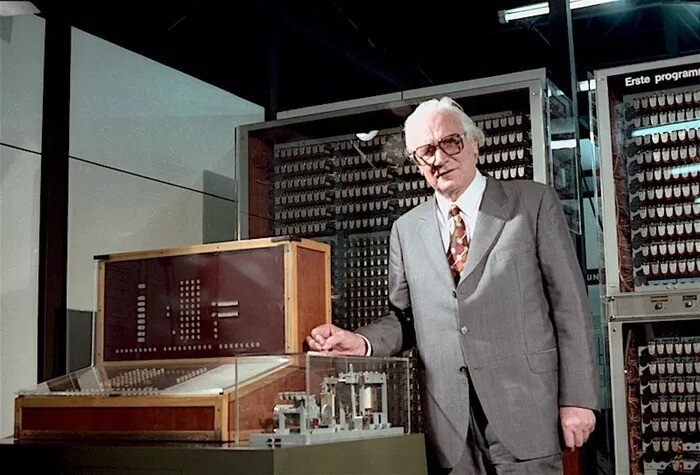 Konrad Tsuze
Konrad Tsuze An early computer created by the German engineer of Conrad Tsuze, who worked in full isolation from developing other scientists. He had a separate unit of memory and a separate console for data entry. And as their carrier, an eight-haired perfocard was performed, made of a compound of 35 mm film.
The car had 2,600 telephone relays and it could be freely programmed in binary floating point code. The Z3 apparatus was used for aerodynamic calculations, but was destroyed at Berlin bombing at the end of 1943. Tsuze led the reconstruction of his brainchild in the 1960s, and now this programmable machine is shown in Munich Museum.
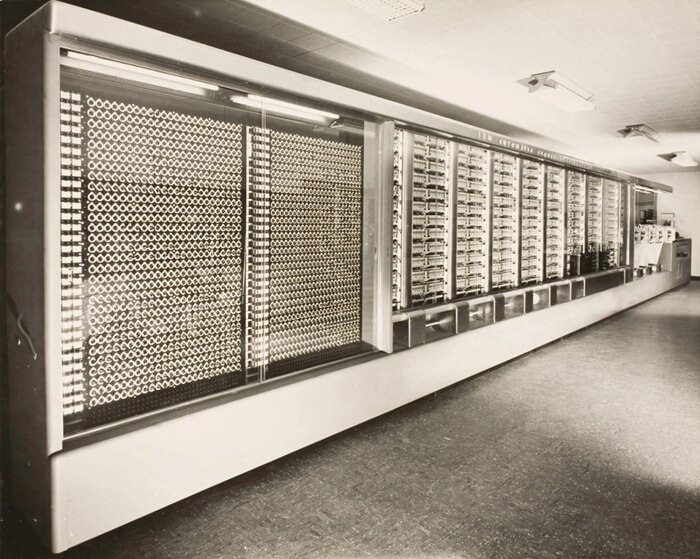
The Mark 1 device conceived by Professor Howard Eiken and released IBM in 1941 was the first programmable computer in America. The car was worth half a million dollars, and was used to develop equipment for the US Navy, such as torpedoes and underwater detection tools. Also, "Mark 1" was used in the development of implosion devices for an atomic bomb.
It is "Mark 1" you can call the most first computer in the world. Its characteristics, in contrast to the German Z3, allowed to perform calculations in automatic mode, without requiring human intervention in the work process.
ATANASOFF-BERRY COMPUTER (ABC)
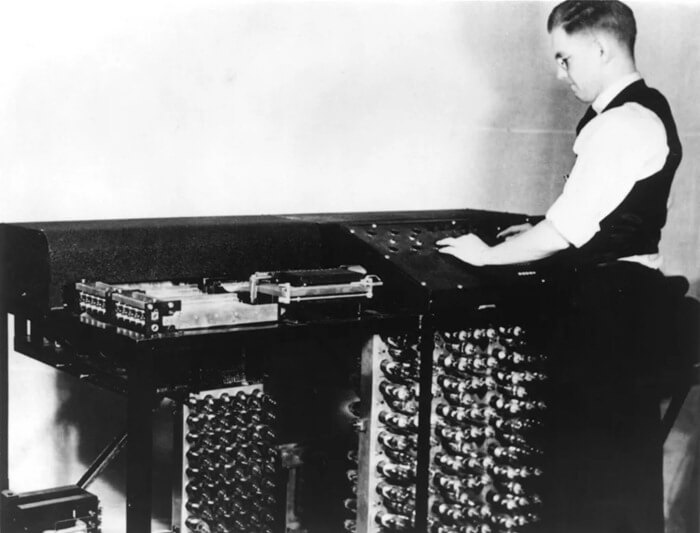
In 1939, Professor John Vincent Atanasov received funds for creating a car called Atanasoff-Berry Computer (ABC). She was designed and collected by Atanasov and graduate student Clifford Berry in 1942. However, the ABC device has not widely known before the patent dispute associated with the invention of the computer. It was allowed only in 1973, when it was proved that the ENIAC co-author John Mokley saw the ABC computer shortly after he became functional.
The legal result of litigation was a landmark: Atanasov was declared the initiator of several main computer ideas, but the computer as a concept was declared impatient and, consequently, open for all developers. ABC full-scale workflow was completed in 1997, proving that the ABC machine functioned as Atanasov claimed.
Eniac
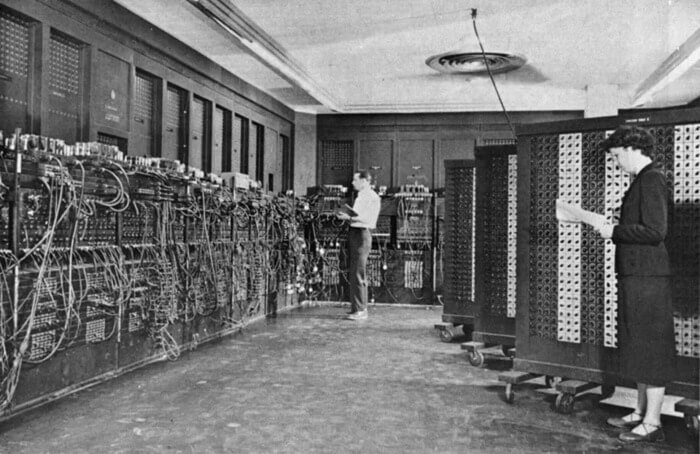 Eniac
Eniac ENIAC was developed by two scientists from the University of Pennsylvania - John Eckert and John Mokley. He could solve a "wide range of numerical tasks" by reprogramming. Although the car was presented to the public after the war, in 1946, it was important for settlements during subsequent conflicts, such as the "Cold War" and the Korean War. It was used for calculations when creating hydrogen bombs, engineering calculations and creating firing tables. And also made weather forecasts in the USSR so that the Americans knew where radioactive precipitations could fall out in the case of a nuclear war.
Unlike Mark 1 with its electromechanical relays, in Eniaka there were vacuum lamps. It is believed that ENIAC spent more calculations for his ten years of operation than all of humanity until that time.
EDSAC
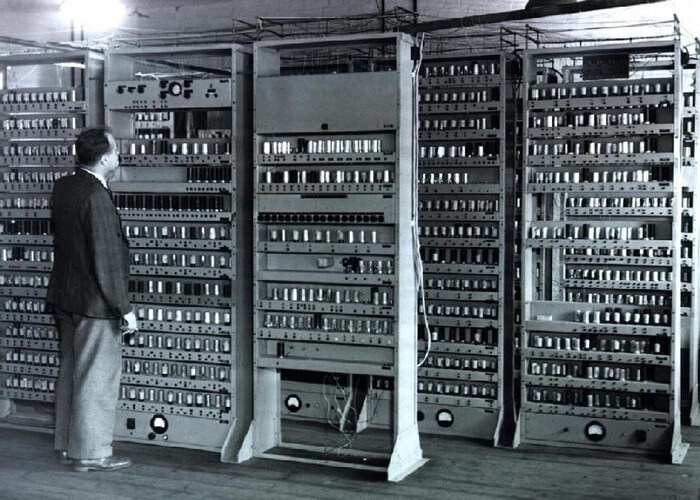 EDSAC
EDSAC The first computer with stored in memory software was called EDSAC. He was assembled in 1949 in the University of Cambridge. The project on its creation was headed by Professor Cambridge and director of the Laboratory of Computational Research Cambridge Maurice Wilks.
One of the main achievements in programming was the use of the Wilx library of short programs called the "subroutine". It was stored on the chapels and was used to perform general repetitive calculations within the Lager program.
What the first computer in the world looked
The American "Mark 1" was huge, taking a length of over 17 meters, and in height - over 2.5 meters. The car, in the shell of glass and stainless steel, weighed 4,5 tons, and the total length of its connecting wires slightly did not reach 800km. For the synchronization of the main computing modules, a fifteen-meter shaft was answered, which led to a 4 kW electric motor movement.
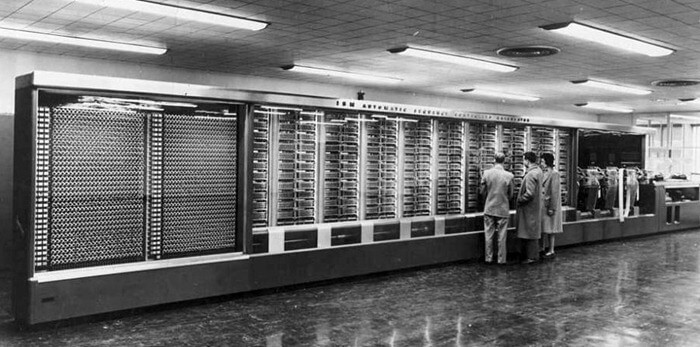 Mark 1 in the IBM Museum
Mark 1 in the IBM Museum Even harder than "Mark 1," was "Eniak". He weighed 27 tons, and demanded 174 kW of electricity. When it turned on, urban lights tusknel. The car did not have a keyboard or a monitor, occupied an area of \u200b\u200b135 sq. M and was wrapped with kilometers of wires. To get an idea of \u200b\u200bthe appearance of Eniaka, imagine a long row of metal cabinets, which are tinted with top to bottom. Because there was no high-quality cooling from the computer, in the room where he was, it was very hot, and Eniak gave failures.
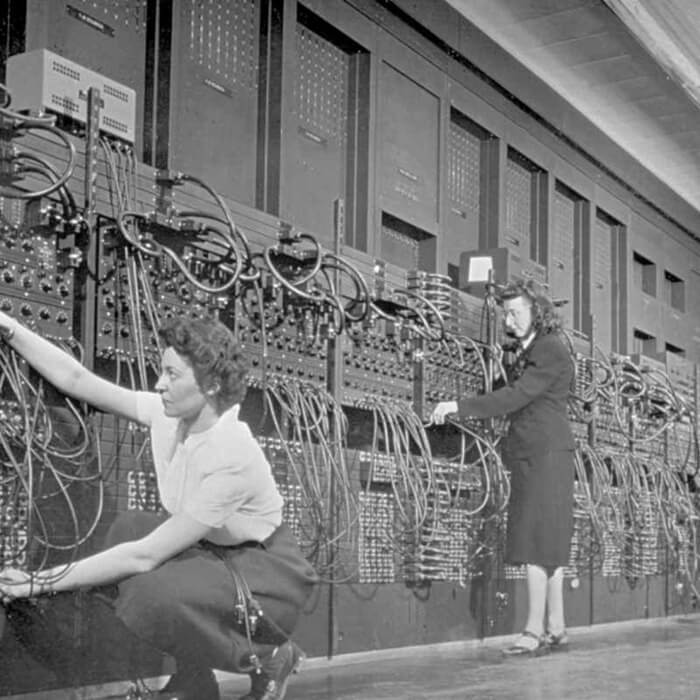 Eniac
Eniac In the USSR did not want to lag behind the West and led their developments to create a computer. The result of the efforts of Soviet scientists has become (MESM). Her first launch took place in 1950. 6 thousand lamps were used in MESM, it ranked 60 square meters. m and demanded power to work up to 25 kW.
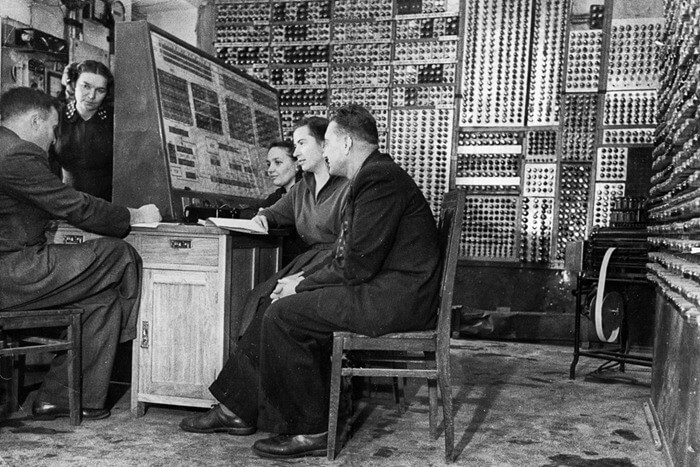 MESM
MESM The device could perform up to 3 thousand operations per second. MESM was used for complex scientific computing, then it was used as a tutorial, and in 1959, the car was dismantled.
In 1952, MESM appeared an older sister - (BESM). The number of electronic lamps in it increased to 5 thousand, increased and the number of operations per second - from 8 to 10 thousand.
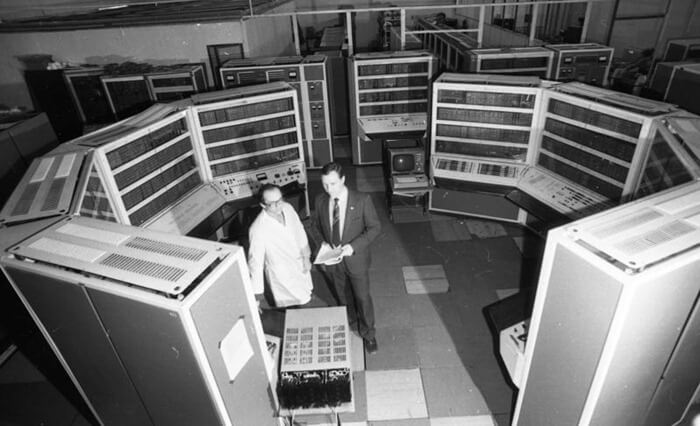 BESM.
BESM. The world's first commercial computer
Submitted to the United States in 1951, one can be called the first computer intended for commercial use.
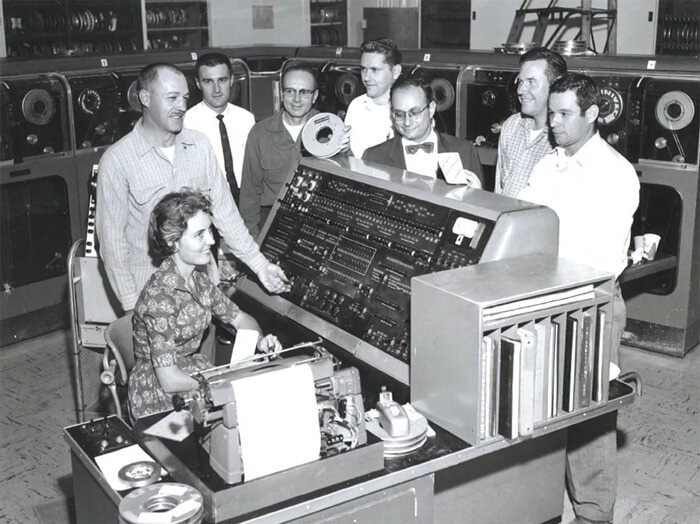
He became famous after using the polling data of 1% of the population, having the right to vote, in order to properly predict that General Dwight Eisenhower wins the election of 1952. When people understood computer processing capabilities, many enterprises began to acquire this machine for their needs.
The very first personal computer in the world
For the first time, the term "personal computer" was applied to the creation of the Italian engineer Pierre Giorgio Pepotto called Programma 101.. He released his company Olivetti.
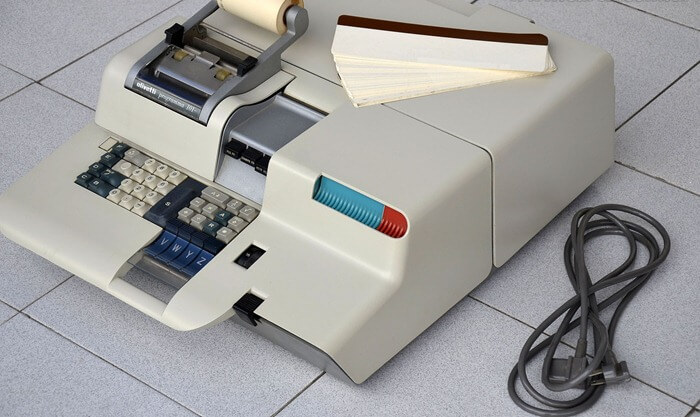 Programma 101.
Programma 101. It cost a 3200 dollars and distributed about 44,000 copies. Ten pieces bought NASA to use Apollo 11 landing for the moon in 1969. ABC network (American Broadcasting Company) used Programma 101 to predict the 1968 presidential elections. The US military used it to plan their operations during the War in Vietnam. He also purchased for schools, hospitals and government agencies and noted the beginning of the era of the rapid development and sales of PC.
First home computer mass production abroad
In 1975, an article about a new computer set - Altair 8800 appeared in one of the releases of the magazine "Popular Electronics". For a few weeks after the device appears, the clients have flooded its manufacturer, Mits, orders. The machine was equipped with a 256-byte memory (expandable to 64 KB) and a universal interface bus that turned into a standard "S-100", widely used in amateur and personal computers of that era.
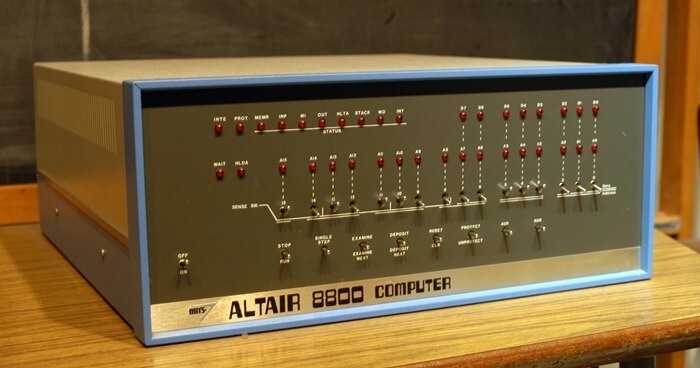
Altair 8800 could be bought for $ 397. After the purchase, the owner of the radio amateur needed to solder and check the performance of the assembled nodes. There were no difficulties on this difficult, it was still to master the writing of programs with zeros and units. Altair 8800 has no keyboard or monitor, hard disk and drive. To enter the user's desired program clicked on the front panel of the device. And the verification of the results was carried out by observing the bulbs flashing on the front panel.
BUT in 1976, the first Apple computer appeared on the light.Designed and manufactured by hand with a Steve Waughty and advertised by his friend as the first product of Apple Compuiter Company. Apple 1 is considered the first PC supplied in the finished form.
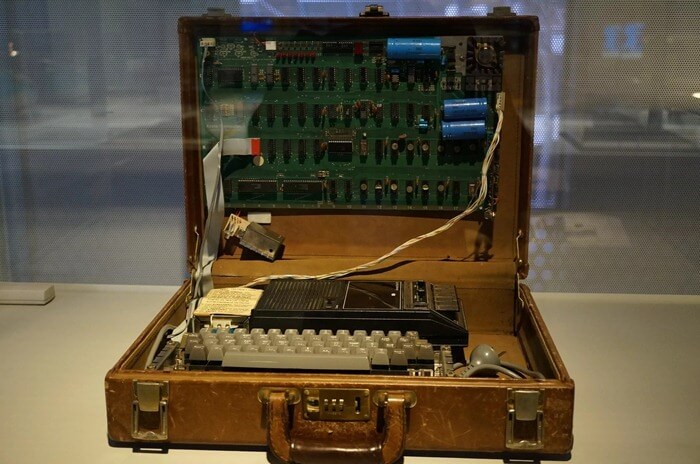 Apple 1.
Apple 1. In fact, the device had no monitor, no keyboard (the possibility of connecting them). But there was a fully equipped circuit board on which there were 30 microcircuits. Altair 8800 and other devices received on the market and there was no one, they had to be assembled from the set. Initially, Apple 1 was almost "hellish" price of 666, 66 dollars, but a year later it was reduced to $ 475. Later, an additional charge was released, which allowed data to record data on a cassette tape recorder. She cost 75 dollars.
First home computer mass production in the USSR
Since the 80s of the XX century, a computer called "Praveth" began to produce in Bulgaria. It was a clone of the second version of Apple. Another clone belonging to the rulebook "Praveth" was the "Soviet" IBM PC, based on the Intel 8088 and 8086 processors. A later clone of Oric ATMOS was the "home" model "Praights 8D" in a small case and with a built-in keyboard. She was produced from 1985 to 1992. Computers "Pravets" stood in many schools of the Soviet Union.
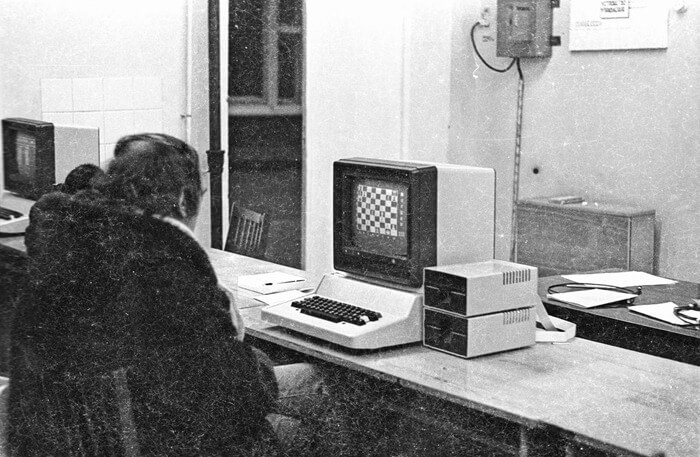
Those who wish to collect their homepage could take advantage of the instructions in the Radio magazine 1982-83. And reproduce the model called "Micro-80". It was based on the KR580BM80 microprocessor, similar to Intel i8080.
In 1984, the Agat computer appeared in the Soviet Union, quite powerful compared to Western models. The RAM volume was 128 KB, which twice the amount of RAM at the Apple models of the early 80s of the twentieth century. The computer was produced in several modifications, had an external keyboard with 74 keys and black and white or color screen.
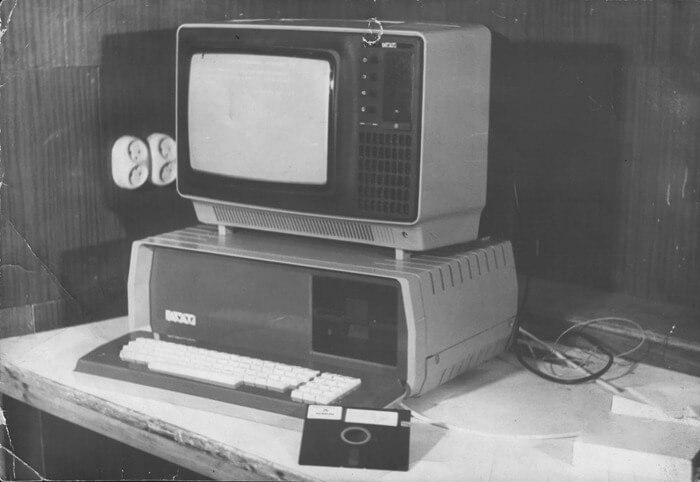
Production of "Agate" went to 1993.
Computers of modernity
Nowadays, modern computer technologies are changing very quickly. Modernity in Billions of times exceeds their ancestors. Each company wants to surprise and so flexible users, and so far many succeed in this. Here are just some of the main topics in recent years:
- The laptop that has had an important impact on the development of the industry: Apple Macbook (2006).
- Smartphone that has had an important impact on the development of the industry: Apple iPhone (2007).
- The tablet that has had an important impact on the development of the industry: Apple iPad (2010).
- The first "smart clock": Pulsar Time Computer (1972). They can be seen on the hand of James Bond in the militant "Live and let me die" 1973.
And, of course, various game consoles: PlayStation, Xbox, Nintendo, etc.
We live at an interesting time (although it sounds like a Chinese curse). And who knows what is waiting in the near future. Neural computers? Quantum computers? Wait and see.
 Service "Prohibition of Calls" from MegaFon
Service "Prohibition of Calls" from MegaFon Tele Support Service2: Free Phone
Tele Support Service2: Free Phone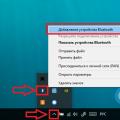 How to connect bluetooth headphones to a computer?
How to connect bluetooth headphones to a computer?